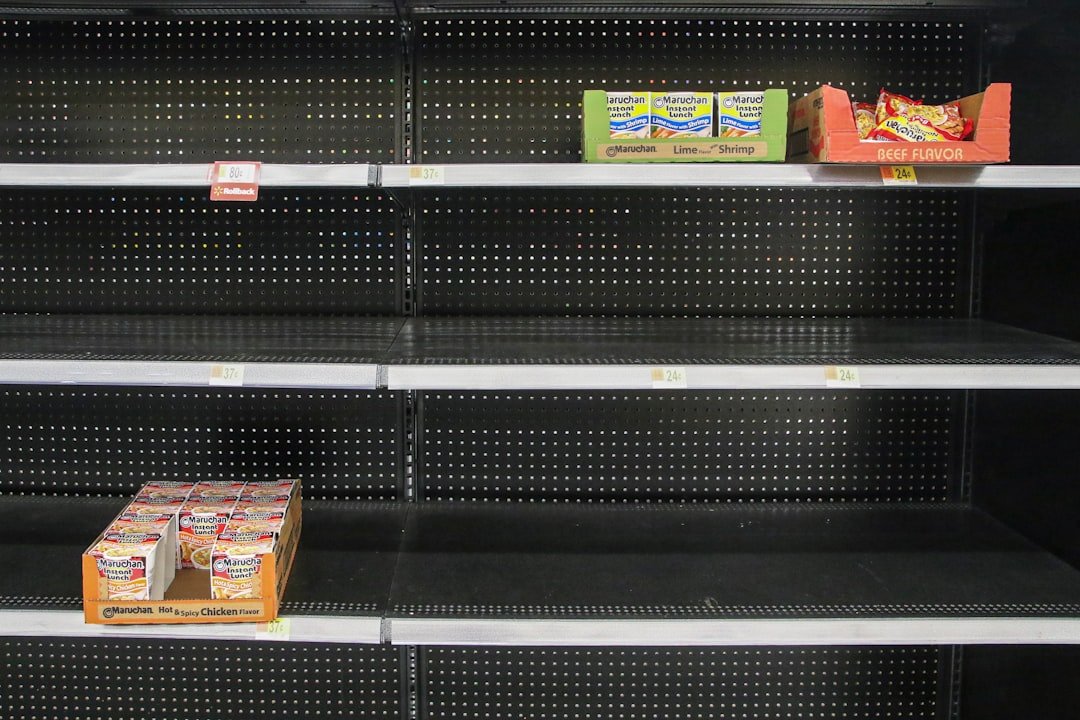Food Security: A Thorough Examination Food security is a complex idea that includes the stability, availability, use, and accessibility of food resources. Food security is the state in which everyone, everywhere, has physical, social, & financial access to enough wholesome food that satisfies their nutritional needs for an active & healthy life, according to the Food & Agriculture Organization (FAO). This definition emphasizes how crucial it is to consider not only the amount of food that is accessible but also its quality and accessibility.
Key Takeaways
- Food security is the state of having reliable access to a sufficient quantity of affordable, nutritious food.
- Climate change can lead to decreased agricultural productivity, increased food prices, and reduced access to food, impacting food security.
- Strategies for ensuring food security include promoting sustainable agriculture, improving access to markets, and investing in social safety nets.
- Technology plays a crucial role in enhancing food security through innovations in agriculture, such as precision farming and biotechnology.
- Sustainable agriculture is essential for ensuring food security by promoting environmentally friendly farming practices and preserving natural resources.
Social justice, agricultural productivity, and economic stability are some of the variables that affect food security. The four pillars of availability, accessibility, utilization, & stability are the dimensions of food security. The supply of food, whether from imports or domestic production, is referred to as availability.
The financial and practical means of obtaining food are referred to as access, and they can be impacted by market prices and income levels. Utilization has to do with how well people absorb nutrients & how nutritious food is. Stability includes the constancy of food access and availability over time, preventing food insecurity from being caused by variations brought on by seasonal shifts or financial crises.
Developing successful plans to address food insecurity globally requires an understanding of these pillars. Because it modifies weather patterns, increases the frequency of extreme weather events, & affects agricultural productivity, climate change poses a serious threat to global food security. Reduced crop yields can result from rising temperatures, especially for staple crops like maize, rice, & wheat.
| Country | Population | Undernourished Population | Food Production (in tons) |
|---|---|---|---|
| United States | 331 million | 11 million | 952 million |
| India | 1.366 billion | 189 million | 717 million |
| China | 1.398 billion | 134 million | 1.3 billion |
For example, according to a study that was published in the journal *Nature Climate Change*, wheat yields may decrease by roughly 6% for every degree Celsius that the temperature rises. It may become more difficult for vulnerable groups to obtain enough nutrition as a result of this productivity drop, which could also worsen current food shortages and raise costs. Also, climate change has the potential to alter agricultural zones & interfere with conventional farming methods.
Once-suitable areas for particular crops may become less viable as a result of shifting precipitation patterns or an increase in pest infestations. For instance, regions of sub-Saharan Africa that primarily depend on rain-fed agriculture are especially susceptible to unpredictable rainfall patterns and droughts, which can result in crop failures and food shortages. These localized effects can have far-reaching effects, influencing food prices & availability in far-off markets due to the interconnectedness of the world’s food systems. A diversified strategy is required to address the issues raised by food insecurity.
Promoting sustainable agricultural methods that increase output while reducing environmental impact is one successful tactic. Crop rotation, agroforestry, & organic farming are a few methods that can strengthen soil health and boost climate change resilience. Legumes, for example, can improve soil fertility and lower the need for chemical fertilizers by being incorporated into crop rotations, resulting in more sustainable farming practices. Enhancing market accessibility and infrastructure for smallholder farmers is another crucial tactic.
Access to markets where they can sell their produce at reasonable prices is a problem for many small-scale farmers. Governments can assist farmers in raising their incomes and productivity by funding rural infrastructure, such as roads, storage facilities, and irrigation systems. Also, farmers can be empowered to produce more sustainably and efficiently by receiving training and resources on best practices in agriculture. Technology is essential to increasing food security because it boosts agricultural efficiency & productivity. Precision agriculture is one innovation that optimizes farming methods by using satellite imagery & data analytics.
Farmers can maximize crop yields while conserving resources by using sensors to track soil moisture levels & only apply water when needed. This method lessens farming’s negative environmental effects while simultaneously increasing efficiency. Also, genetically modified organisms (GMOs) that can survive in harsh environments like drought or salinity or that are resistant to diseases and pests have been created as a result of biotechnology breakthroughs.
It has been demonstrated that crops like drought-tolerant maize & Bt cotton greatly boost yields in areas where conventional varieties are ineffective. But the use of these technologies needs to be accompanied by a thorough analysis of the moral ramifications and possible effects on biodiversity. Long-term food security & the preservation of natural resources for future generations depend on sustainable agriculture. Practices that preserve ecological balance, encourage biodiversity, and lessen dependency on chemical inputs are highlighted in this strategy.
For example, intercropping, or growing several crops close together, is an agroecological technique that can improve soil health and increase resistance to pests and diseases. Sustainable agriculture also helps to mitigate climate change by lowering greenhouse gas emissions linked to traditional farming methods & storing carbon in soils. According to research, implementing sustainable practices could cut agricultural emissions worldwide by as much as 30% by 2030. We can build a more robust food system that can withstand the risks posed by climate change by giving sustainability top priority in agricultural systems.
Because agricultural systems are frequently underdeveloped and poverty rates are high in developing nations, food insecurity is especially severe there. Targeted interventions that take into account local contexts & needs are necessary to address this issue. Establishing social safety nets that offer vulnerable populations food or financial support is one practical strategy. In times of crisis, programs like food vouchers or cash transfers can assist families in obtaining wholesome food. Improved food security in developing nations also depends on women’s empowerment in agriculture.
Although they frequently encounter obstacles like restricted access to land, credit, & education, women contribute significantly to the production of food. In addition to increasing women’s productivity, we can improve household food security by giving them access to resources and training. Initiatives centered on women’s cooperatives, for instance, have demonstrated promise in boosting agricultural productivity & building community resilience. Food security & public health outcomes are inextricably linked.
Both undernutrition and overnutrition can cause malnutrition, which can have detrimental effects on a person’s health & wellbeing. Long-term health problems like diabetes and cardiovascular diseases in adults, as well as stunted growth in children, can result from inadequate access to nutrient-dense food. On the other hand, consuming excessive amounts of processed foods that are high in fats & sugars can lead to the rising prevalence of obesity worldwide. Food insecurity can also make mental health problems worse. Due to the stress of not knowing where they will get their next meal, people who are food insecure are more likely to experience anxiety and depression, according to studies.
Therefore, addressing food security is not just about making sure people are getting enough nutrition; it is also a public health necessity that calls for cross-sector collaboration. At the local and national levels, governments are essential in forming policies that support food security. Investments in infrastructure development, social protection programs for vulnerable groups, & agriculture should be given top priority in effective policy frameworks.
For example, policies that increase agricultural productivity and lower poverty levels can benefit smallholder farmers by providing subsidies or credit. International collaboration is also necessary to address the problems associated with global food security. Initiatives like the Sustainable Development Goals (SDGs) of the UN highlight the necessity of international cooperation in order to end hunger & advance sustainable agriculture by 2030.
Governments must cooperate in order to address trade barriers that impede food access and exchange best practices, resources, and knowledge. In summary, a thorough grasp of the complexities & relationships between food security and a range of other factors, including public health, technology, sustainable practices, climate change, and governmental policy, is necessary. We can strive toward a future in which everyone has access to enough food that is safe & nourishing by taking a comprehensive approach that takes these factors into consideration.



